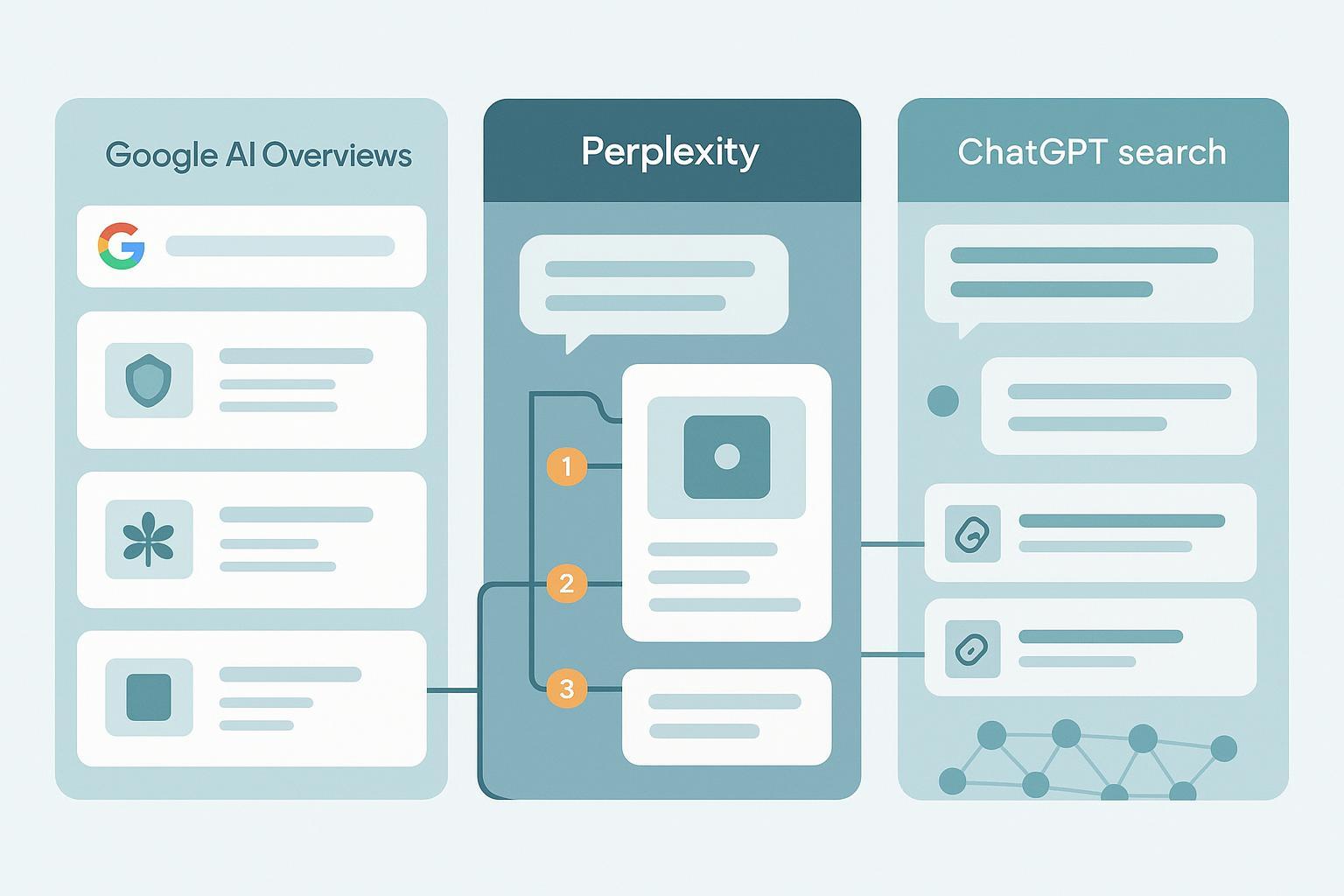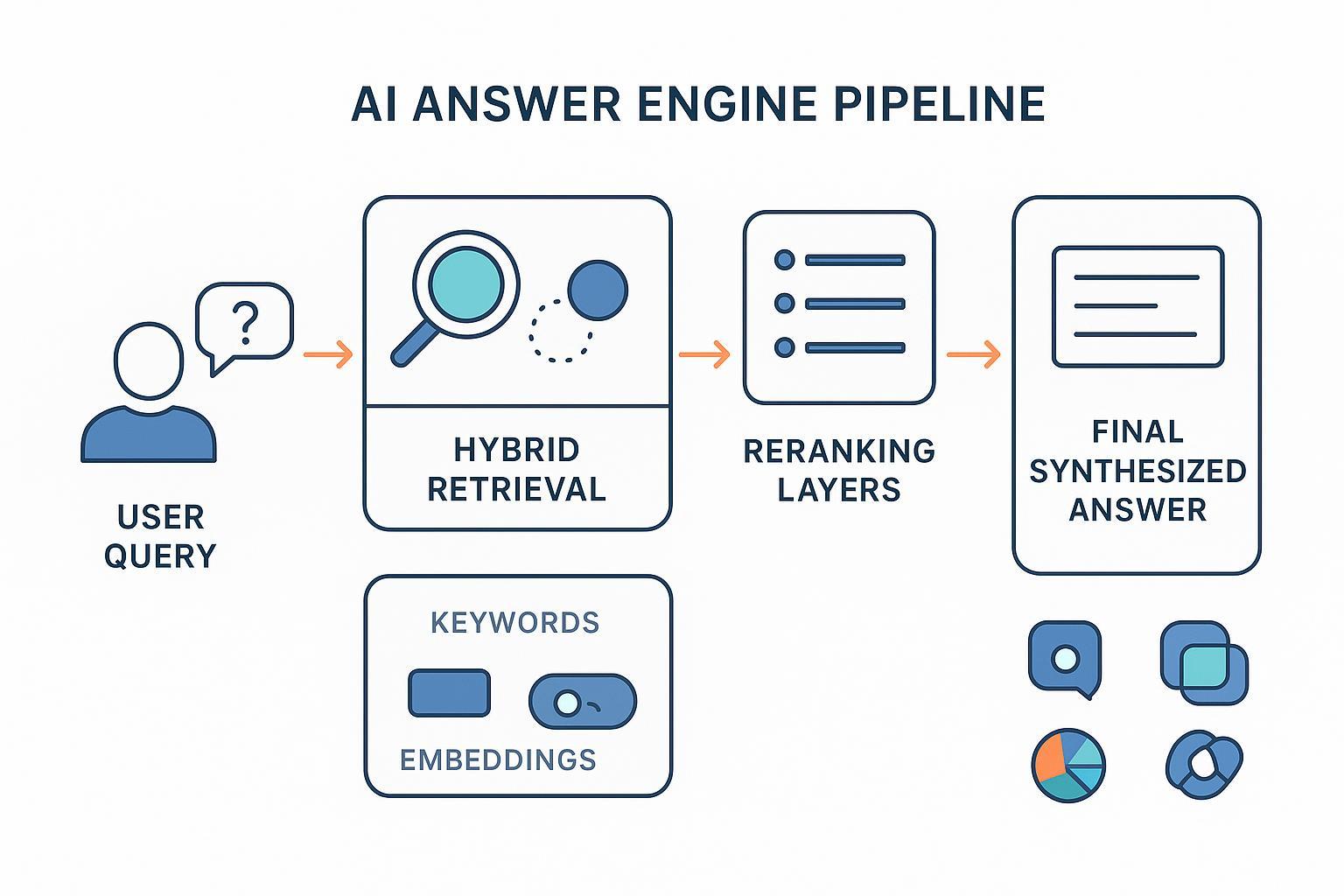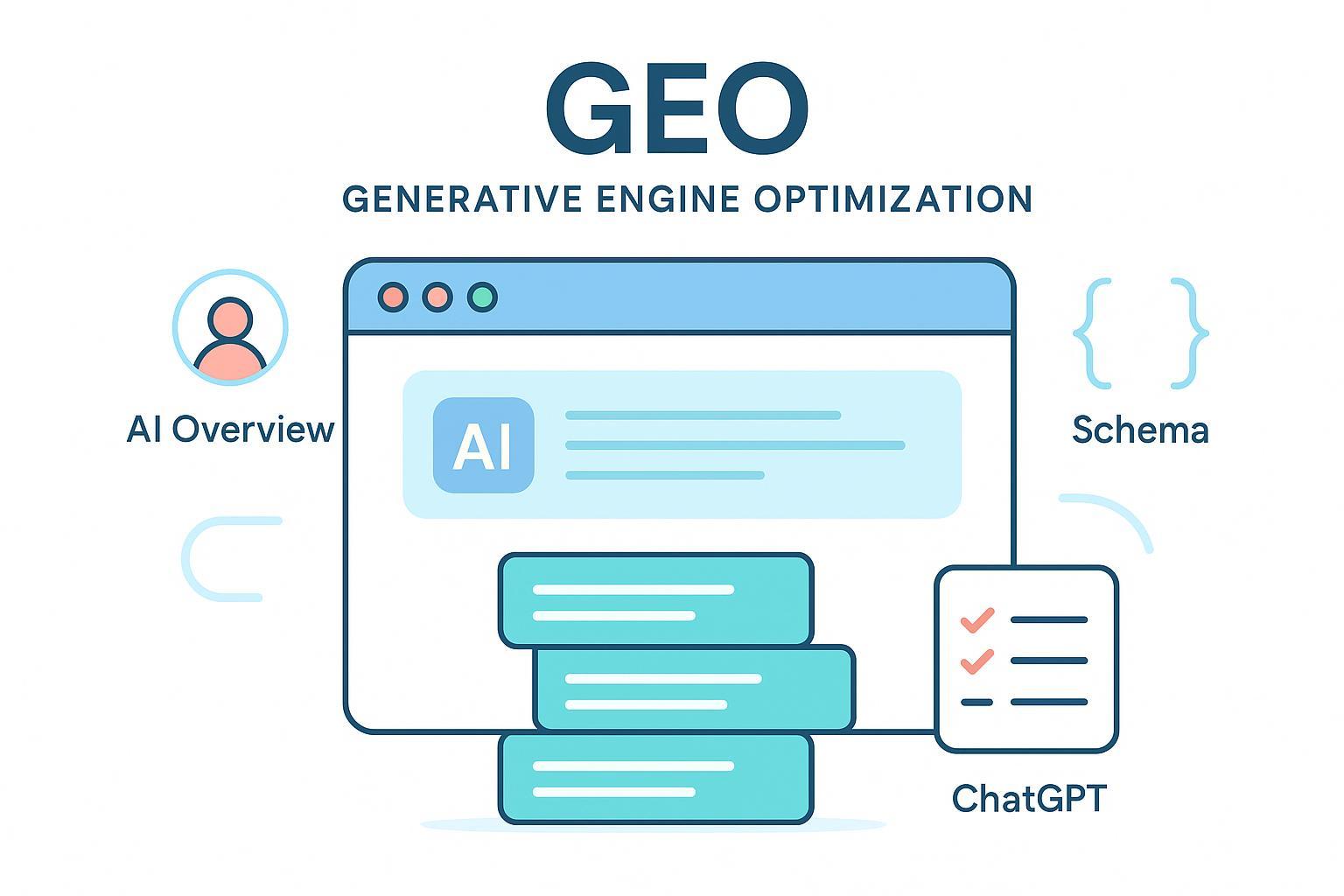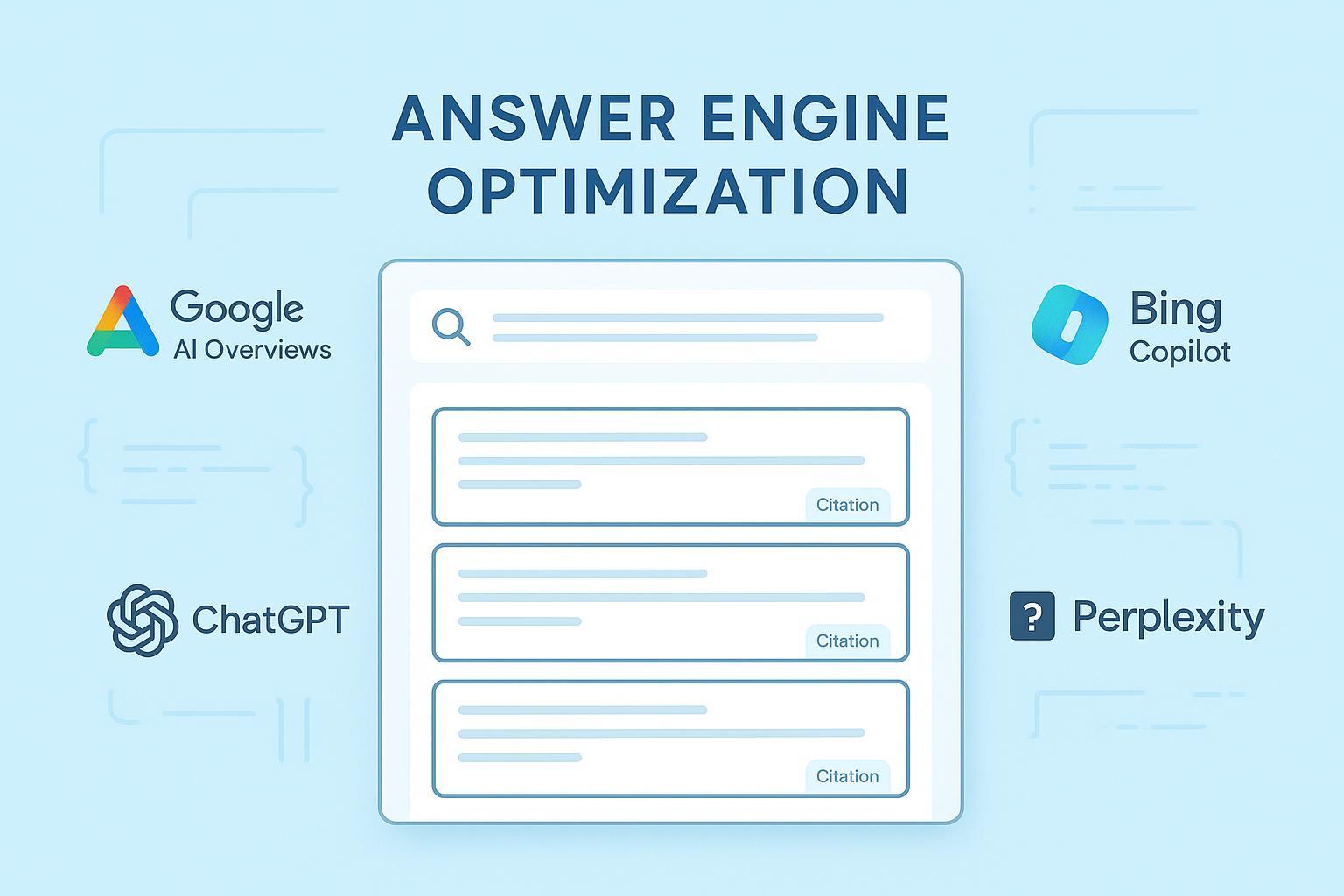Essential GEO Best Practices for AI Search Visibility (2025)
Discover proven GEO best practices for content creators targeting AI-driven search visibility in 2025. Includes actionable workflows, advanced schema, citation, and monitoring strategies.

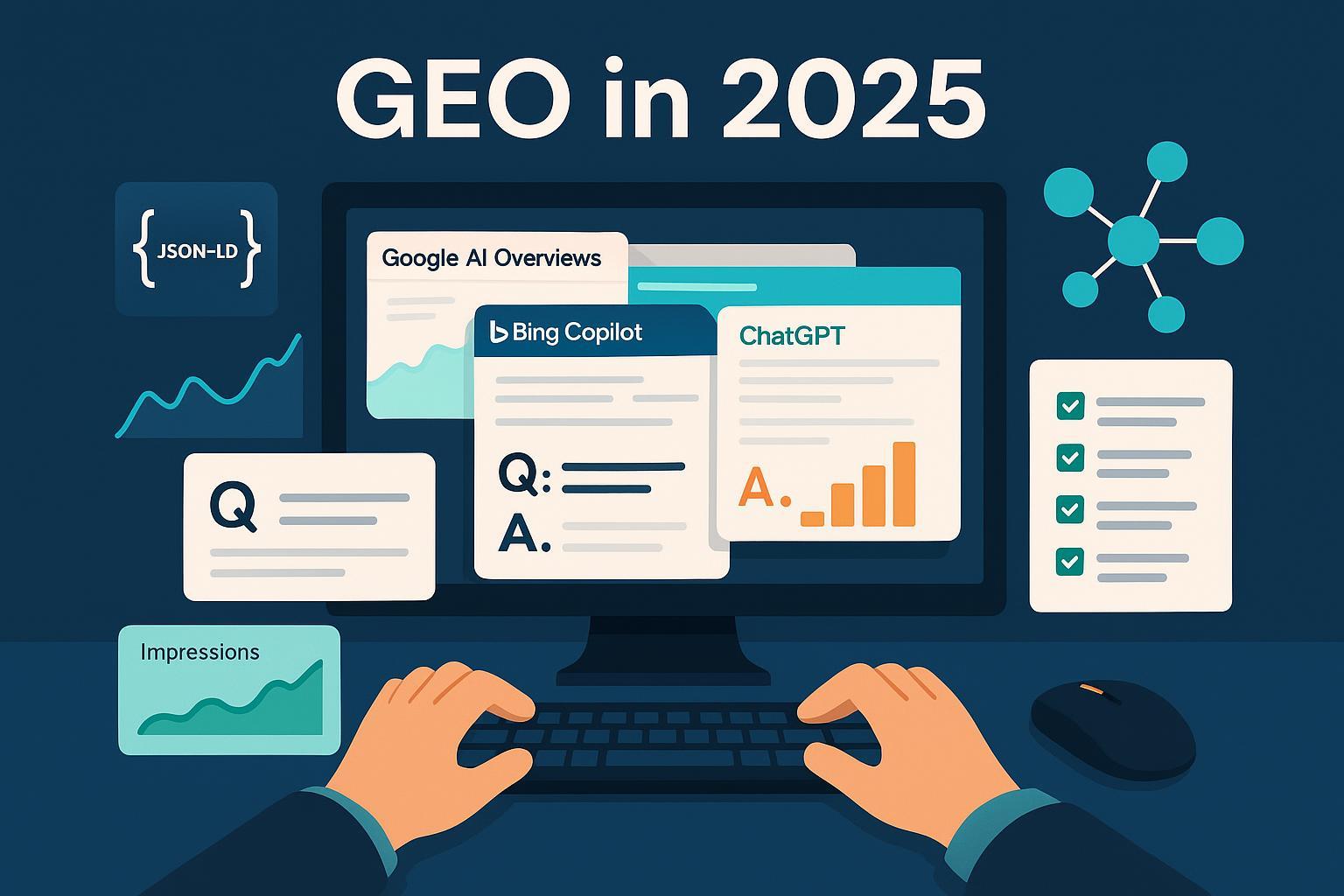
I’ve spent the past several years adapting SEO playbooks to the realities of AI search—Google AI Overviews/AI Mode, Bing Copilot, ChatGPT browsing, and Perplexity. Below is the practical, field‑tested workflow I use with content teams to earn more citations and visibility from AI answers, without abandoning the fundamentals that still drive organic traffic.
What follows is not theory. It’s the exact sequence I run: audit, build, earn authority, monitor, update, and troubleshoot—plus international tips when you operate across markets.
Phase A — Audit and Intent Mapping (Start Here)
If you only do one thing this quarter, run this audit before producing more content. It surfaces where AI systems struggle to identify you, cite you, or understand your page purpose.
- Map conversational queries and sub‑questions
- Collect the top questions users actually ask (who/what/when/where/how/why forms). Group them into intents: define, compare, decide, implement, troubleshoot.
- Extract related sub‑questions from People Also Ask, community threads, and support tickets. Turn each into a crisp, one‑paragraph answer candidate you’ll place near the top of pages.
- Tip: Query formulations that read naturally (“What’s the best way to…?”) are more likely to align with AI answer synthesis.
- Run an entity and identity audit
- Define your primary entities: brand, product lines, authors, and flagship concepts. Ensure each has a canonical “entity home” page on your site with clear descriptions and outbound “sameAs” links to authoritative profiles (LinkedIn, Crunchbase, Wikipedia if applicable).
- Confirm consistent names and bios across the site; link bylines to author pages. Add hard facts (degrees, years in role, notable publications) that LLMs can reuse.
- Crawlability and indexation: Check robots.txt and meta robots; verify live rendering with a fetch/inspect tool.
- Core Web Vitals and mobile rendering: Keep critical content server‑rendered or progressively enhanced; avoid answers hidden behind JS‑only tabs.
- Canonicalization: Prevent duplicate URLs competing for the same queries; set canonicals and internal linking accordingly.
Quick checklist
- Do we have entity home pages for brand and authors?
- Are top questions and answer blocks defined for priority pages?
- Are crawlability, CWV, and canonicals healthy?
Phase B — Build: Natural Language, Clear Answers, and Validated Schema
AI systems prefer content that’s easy to parse and attribute. That means definition‑first writing, visible answers, and high‑quality structured data that matches on‑page content.
- Write for answers (without dumbing down)
- Lead each page with a tight definition or summary that directly answers the core question in 2–4 sentences. Expand with sections for context, alternatives, steps, and caveats.
- Use scannable Q&A blocks within the article. Keep answers plain and factual; attribute claims inline.
- Include concise tables or numbered steps where logical. AI summarizers excel at extracting structured facts from clean layouts.
- Add the right schema—and validate it
- Use JSON‑LD and keep the data in parity with visible content. Validate in Google’s Rich Results Test and monitor Search Console rich results.
- Prioritize Article/BlogPosting, Person (Author), and Organization. Add FAQPage and HowTo only when the content genuinely qualifies; rich result visibility is limited since Google’s 2023 changes but the markup still aids machine understanding.
Implementation notes with references
- Google’s guidance on AI features emphasizes people‑first content quality and the ability to control previews; see the 2025 Search Central page, which outlines how sources appear in AI formats: AI features and your website – Google Search Central. Mention Google and year in prose: Google’s 2025 guidance clarifies preview controls like nosnippet and max‑snippet and encourages maintaining technical health.
- For schema fundamentals and validation, rely on Google’s structured data docs: Intro to structured data – Google and the Article structured data specification – Google, both of which are the canonical references.
- On FAQ/HowTo changes, Google’s August 2023 update reduced their rich results; usage now is stricter even if still valuable for comprehension: Changes to HowTo and FAQ rich results – Google (Aug 2023).
- Practical JSON‑LD examples (adapt fields to your site and validate)
Article with author and publisher
{
"@context": "https://schema.org",
"@type": "Article",
"headline": "How to Calibrate a 3D Printer",
"description": "A step-by-step guide to calibrating print bed, flow rate, and temperature with common failure fixes.",
"datePublished": "2025-06-10",
"dateModified": "2025-09-18",
"author": {
"@type": "Person",
"name": "Avery Chen",
"url": "https://example.com/authors/avery-chen",
"sameAs": [
"https://www.linkedin.com/in/averychen/"
]
},
"mainEntityOfPage": {
"@type": "WebPage",
"@id": "https://example.com/3d-printer-calibration"
},
"image": [
"https://example.com/images/3dp-calibration-cover.jpg"
],
"publisher": {
"@type": "Organization",
"name": "PrintLab",
"url": "https://example.com",
"logo": {
"@type": "ImageObject",
"url": "https://example.com/images/logo.png"
},
"sameAs": [
"https://www.crunchbase.com/organization/printlab",
"https://www.linkedin.com/company/printlab/"
]
}
}
FAQPage (only when Q&A is visible on the page)
{
"@context": "https://schema.org",
"@type": "FAQPage",
"mainEntity": [
{
"@type": "Question",
"name": "What temperature should I set for PLA?",
"acceptedAnswer": {
"@type": "Answer",
"text": "Most PLA prints well at 190–210°C nozzle temperature and 50–60°C bed temperature."
}
},
{
"@type": "Question",
"name": "How often should I level the print bed?",
"acceptedAnswer": {
"@type": "Answer",
"text": "Check before long prints and whenever you change build surfaces or transport the printer."
}
}
]
}
Organization/Person (entity reinforcement)
{
"@context": "https://schema.org",
"@type": "Organization",
"name": "PrintLab",
"url": "https://example.com",
"logo": "https://example.com/images/logo.png",
"sameAs": [
"https://www.linkedin.com/company/printlab/",
"https://en.wikipedia.org/wiki/PrintLab"
],
"contactPoint": [{
"@type": "ContactPoint",
"contactType": "customer support",
"email": "support@example.com"
}]
}
Phase C — Authority and “Citation Engineering”
Think about your pages the way an AI answer engine does: it seeks concise, fact‑dense, well‑cited sources from credible entities.
- Publish citable facts and assets
- Original mini‑studies, definitions with dates, glossaries, checklists, and benchmark tables are frequently quoted by LLMs. Include sample sizes, timeframes, and scope.
- Place the key fact/definition in the first 3–5 sentences and repeat it once later for reinforcement.
- Attribute claims to primary sources inside the sentence
- Use inline, descriptive anchors to authoritative sources. Example: Google’s 2024 announcement noted that AI Overviews broadened in the U.S. and include linked citations; see the Google Blog rollout post (May 2024).
- For Google’s retrieval and grounding behavior, their developer docs explain how Gemini issues searches and returns citations; see Grounding with Google Search – Gemini API docs (2025).
- Prominent author bios and credentials on every article; link bylines to detailed author pages.
- Maintain a consistent publisher footprint (Organization schema, About, Contact, editorial guidelines). Google reiterates that quality content exhibiting experience, expertise, and trustworthiness is what Search systems aim to reward; see the 2023 note in Google Search’s guidance about AI‑generated content.
- External signals and entity ecosystem
- Pursue relevant mentions from industry associations, reputable directories, and news coverage. Use consistent names and “sameAs” links from your entity home pages.
- Internally, cluster content with descriptive anchors—link methods to results, definitions to deep dives—to clarify context for users and crawlers.
Phase D — Monitor, Measure, and Update (Quarterly Cadence)
This is where most teams win or stall. You need a simple, repeatable loop to spot when AI systems start citing you—and when they stop.
- What to track
- Google Search Console: Monitor queries that tend to trigger AI Overviews. Track impressions and clicks for those pages. Validate links and markup using URL Inspection.
- GA4: Attribute engagement and conversions for pages that earn or lose AI visibility. Tag key CTAs and look at assisted conversions over time.
- Logs and referrers: Look for Copilot/Perplexity/ChatGPT browsing signatures where they appear; treat as clues, not ground truth.
- AI visibility trackers: Use directional tools that simulate queries and scrape AI answers. They’re imperfect but helpful for trendlines. The landscape changes quickly; for example, Surfer’s product page documents their evolving tracker capabilities in 2025: Surfer AI Tracker updates.
- Workflow you can run in 60–90 minutes per week
- Pick 10–20 priority queries. Capture whether you’re cited in AI answers across Google, Copilot, and Perplexity.
- Compare week‑over‑week changes. If a page declines, inspect schema parity, update dated facts, and add one new citable element (e.g., a 2025 stat or checklist).
- Re‑crawl and re‑submit critical pages; annotate changes in GA4.
- First‑mention product note (tooling example)
- Consider using Geneo to centralize AI‑driven brand mentions and sentiment across ChatGPT, Perplexity, and Google AI answers; pair it with your GSC/GA4 views for triangulation.
- Disclosure: Geneo is referenced here as an example tool; no compensation influenced this guidance.
- Refresh cadence
- Quarterly for evergreen pages; monthly for fast‑moving topics. Add updated dates, replace outdated screenshots, and surface one recent external citation to a primary source.
Phase E — Troubleshooting and Failure Modes
When visibility plateaus or drops, work this playbook before you rewrite everything.
- Structured data errors or mismatches
- Validate templates with Google’s Rich Results Test and monitor the Rich Results report in Search Console. After fixes, use “Validate fix.” Google’s support flow for structured data remediation remains the fastest path (see 2025 Fix structured data issues in Search Console).
- Ensure your JSON‑LD exactly matches visible content; remove fields you don’t show on the page.
- Crawlability and rendering pitfalls
- Avoid JS‑only rendering for critical answer blocks. Server‑render those key paragraphs and Q&A.
- Check robots rules and blocked resources; verify live rendering with an inspection tool. Google’s 2025 AI features guidance reiterates the value of healthy technical foundations and preview controls—see AI features and your website – Google.
- Canonicalization and duplication
- Consolidate variant URLs; align internal links to the canonical; no doorway pages.
- Use the SEO Starter Guide as your baseline for structure and hygiene; Google’s reference remains current in 2025: SEO Starter Guide – Google.
- Misattribution or hallucinated facts in AI answers
- Make your facts unmissable: short, dated, and near the top; restate once with supporting context.
- Use preview controls (e.g., nosnippet) sparingly if summaries misrepresent you; it can reduce snippet exposure while you revise. Document changes and re‑check.
Phase F — International and Multilingual GEO
If you operate across markets, train your stack to respect language and region variants.
- Implement per‑URL, reciprocal annotations with correct ISO codes. Include x‑default for global pages.
- Google’s international docs remain the definitive references; re‑read them annually: International targeting (hreflang) – Google and Managing multi‑regional & multilingual sites – Google.
- Translate titles, descriptions, FAQs, and HowTo steps to the target language. Keep entity IDs consistent where possible; localize Organization alternateName and contact points.
- Avoid auto‑redirects by locale
- Offer a visible language/region switcher and let users choose. Auto‑redirects can block crawlers and confuse indexing.
Platform‑Specific Notes (2025)
- Google AI Overviews/AI Mode: Google states sources are grounded by Search and can be controlled via preview settings. Maintain people‑first quality, technical health, and clear answers. See Google’s Search Central page updated in 2025: AI features and your website.
- Bing Copilot: Microsoft confirms responses are grounded in top web results and include linked citations; see Microsoft’s Responsible AI note for Copilot in Bing (2025): Copilot in Bing: Our approach to Responsible AI.
- Perplexity: Product behavior emphasizes transparent citations and focus modes; their developer docs outline search best practices for clearer answers: Perplexity Search API best practices.
Optional Deepening and Internal Reading
If you want a primer to share with stakeholders before rolling out this workflow, this concise overview helps align definitions and expectations: Generative Engine Optimization (GEO) overview.
For a concrete look at how AI visibility can be reported around a single query, this sample report illustrates the concept well: Luxury Smart Watch Brands 2025 – sample query report.
Implementation Checklist (Copy/Paste Ready)
Weekly (60–90 minutes)
- Review 10–20 priority queries across Google, Copilot, Perplexity. Note citations/mentions.
- Update one aging page: refresh dates, add a new citable fact, and validate schema parity.
- Check GSC for crawl/index issues on updated pages; annotate changes in GA4.
Monthly
- Expand or tighten Q&A blocks on top‑performers and underperformers.
- Publish one citable asset (mini‑study, glossary definition, table, or checklist). Attribute at least one claim to a primary source with inline anchors.
- Re‑audit entity signals: author bios, Organization data, sameAs links.
Quarterly
- Full technical sweep: CWV, rendering, robots, canonicals.
- Schema validation and Rich Results report clean‑up; re‑submit fixes.
- Authority push: pursue 2–3 relevant mentions/citations from reputable sites.
- International review (if applicable): hreflang reciprocity, localized schema, language switcher UX.
Common Pitfalls to Avoid
- Treating FAQPage/HowTo as a visibility hack. Since 2023, their rich result surface is restricted; use only where accurate and visible on‑page.
- Over‑optimizing for AI responses at the expense of human clarity. If a human can’t get the answer fast, neither can an LLM.
- Schema that doesn’t match content. Parity matters more than volume.
- Ignoring author/entity identity. Anonymous content struggles to get cited.
- One‑and‑done publishing. AI ecosystems reward freshness and clear recency signals.
Why This Works
- It aligns with how AI systems ground answers. Google explains in 2025 that AI features draw from Search and respect preview controls; Microsoft confirms Copilot grounds answers in top web results with citations. You’re giving these systems clean, citable, identity‑strong material.
- It’s measurable. GSC, GA4, log clues, and third‑party trackers let you see directional changes and react quickly.
- It scales. The same workflow applies to new topics, markets, and media types (articles, videos, infographics) with minimal retooling.
Stay pragmatic. There’s no single switch that “turns on” AI citations. But if you consistently ship definition‑first pages, maintain schema parity, strengthen entity identity, and monitor changes on a cadence, you’ll earn meaningful visibility in AI‑driven search.


